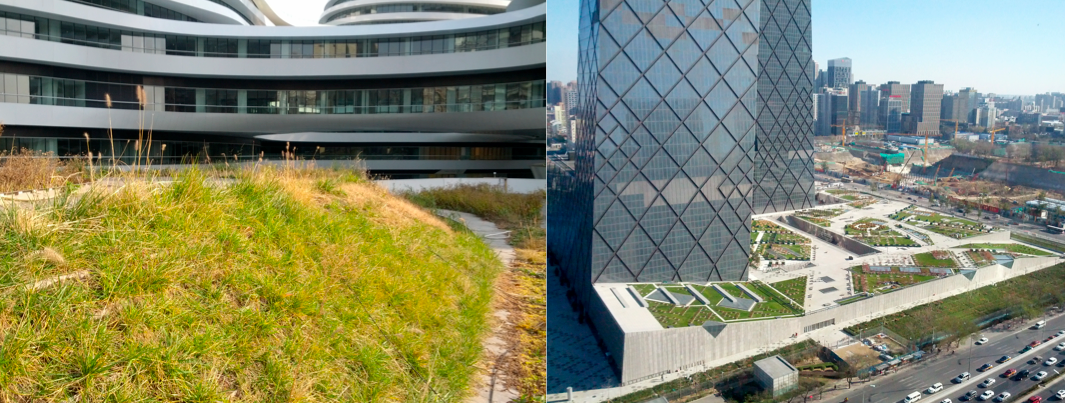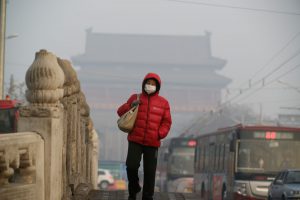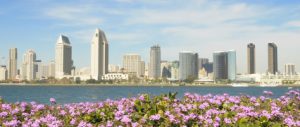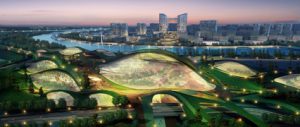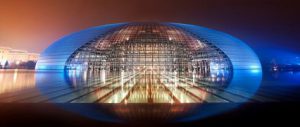Beijing’s population has grown rapidly over the last 20 years and with construction under way on hundreds of kilometres of subway, a second huge airport and a high speed rail network, it is likely to continue to do so.
Population growth has been accompanied by income and automobile growth, which together have lead urban expansion to the 4th, 5th and now 6th ring road and beyond. This growth has benefited the urban population but also created environmental problems, impacting health and quality of life.
Air pollution is Beijing’s best known environmental problem, but the prevalence of roads, parking, rooftops and other impervious surfaces present challenges, which are often overlooked. Impervious surfaces efficiently move water into the storm-water system, which then get overloaded during large rain events causing flooding.
The urban heat island effect is another problem as buildings, roads and walkways absorb heat while the natural cooling of vegetation is absent. The peak temperature difference between the vegetated areas of Beijing and its dense urban areas can be as high as 6.5°C which increases electricity use and discomfort of residents.
Recent studies found that the urban heat in Beijing increases rainfall during large storm events making flooding more severe.
The heat also increases the amount of energy needed for air conditioning and makes non-motorised transit less attractive, which leads to more air pollution from power generation and vehicle emissions. As Beijing’s urban areas continue to grow, solutions are needed to reduce air pollution and flooding while cooling the urban area.
Greening Beijing’s rooftops
Green roofs – roofs covered with plant vegetation – first gained popularity in Germany and have since been spreading around the world. They help cities reduce storm water runoff, cool the urban environment, absorb air pollution, insulate buildings and increase biodiversity. With enough green roof adoption, Beijing could realise positive impacts on the environment and improved quality of life.
My research on the topic found that in Beijing there is around 93 million square metres of roof space suitable for cost effective green roof adoption. If the cheapest and most basic forms of green roofs covered the suitable roof space, the urban environment would be substantially improved.
Under this scenario air particle pollution could be reduced by as much as 880,000 kilograms every year, equivalent to taking 730,000 cars off the road. The roofs could reduce storm water by 3.5 million cubic metres during large rain events, equivalent to filling the Forbidden City and Tiananmen Square with two metres of water or 1,400 Olympic swimming pools.
In addition the average summer temperature in Beijing would be reduced by 0.32°C, with greater reductions during peak hours. Finally over half of the green roof area would see a significant increase in insulation leading to lower energy use for heating and cooling.
The environmental improvements would lead to other benefits improving quality of life. As an example, a cooler city would need less air conditioning, have a lower probability of major floods and a more pleasant urban environment. When pollution is reduced, people are more willing to walk and bike, keep their windows open at night for cooling and take their kids outside.
Green roofs can serve as micro-parks or urban farms and have been shown positively to affect people looking down upon them from other buildings.
Greening all the suitable roofs would require an estimated capital investment of 29 billion yuan (US$4.7 billion) at the current price, plus the yearly maintenance costs. This could drop with economies of scale and technological advances but still represents a considerable investment.
In addition the water required for vegetation could be minimised by using native grasses, advanced sprinkler systems and grey water. The financial cost and water use would in most cases be greatly outweighed when the direct and indirect benefits to the city are considered. While it is not realistic to cover all suitable roof area in Beijing, pursuing practical projects and ensuring that much of the new construction includes green roofs would have a large impact on the urban environment.
Beijing’s subsidised green roofs
Beijing’s government has been using subsidies to create green roofs since the lead up to the 2008 Olympic games, adding, on average, more than 100,000 square metres of green roofs a year since 2005.
This effort has included a recent focus on the Chang’an Avenue east-west road that runs north of Tiananmen Square in the city centre and has seen more than 120,000 square metres of green roofs completed in the last few years. This offers a foundation for implementating a much wider roof greening effort to help address the cities environmental challenges.
As the capital city, Beijing has tens of millions of metres of government building roofs when the Central, Municipal, District and University levels are taken into account. If the government covered only the government buildings that are poorly insulated, it would add millions of square metres of green roofs with a relatively short pay back from reduced heating and cooling costs.
This represents the easiest and most promising option for quick adoption of green roofs with all the benefits going to the government and citizens they serve.
Non high-rise commercial space and public housing also offer a considerable amount of green roof potential. Much of the restaurant and retail commercial space in Beijing has large roof areas, which are poorly insulated. Finding ways to incentivise the owners, who often do not pay for the heating and cooling of the space, to install green roofs would benefit building tenants and the greater population.
Municipal public housing and work unit housing located throughout the city are usually poorly insulated and house lower to middle-income families that would greatly benefit from the environmental effects of green roof construction. Because of the complex ownership arrangements and limited means, projects in this sector would require direct government funding and serve as a social benefits transfer in the form of lower energy costs.
The use of green roofs in new construction is an even more promising opportunity with many buildings in the Central Business District already adopting green roofs. The government could develop building codes that require or incentivise new commercial developments to include green roofs, which are cheaper when included in new construction.
Green roofs help to bring the natural environment back into the city without replacing human functions. The benefits far outweigh the costs and the position of Beijing as the capital city offers an opportunity for rapid, wide scale adoption, serving as an example for the rest of China while improving the lives of it’s residents.
